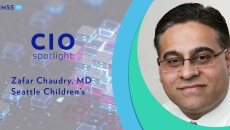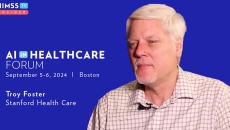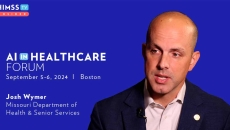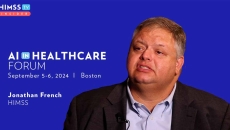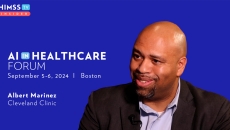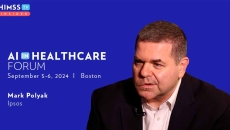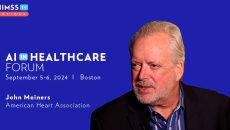HIMSS TV
Sense, emotion-sensing eyewear, unlocks real-world data to give us insights into our emotional health and even diet, representing the next pillar of health, says Steen Strand, CEO of Emteq Labs.
When you combine AI's ability to take on the work people don't necessarily have to do with the time freed up for experts to focus on their subject matter, "that's when you have the magic," says Zafar Chaudry, chief AI and information officer at Seattle Children’s Hospital.
Stanford Health Care is working on an ambient-voice pilot to reduce the clinician workload and expanding AI into the ED and inpatient spaces, says Troy Foster, director of digital health.
Stanford Health Care uses AI-generated replies to in-basket messages and has an ambient AI scribe to reduce clinician burden, but does not use AI for clinical decision support, says medical informatics director Dr. Shreya Shah.
A public-facing genAI chatbot allows citizens to get the answers they deserve, no matter how they get to them, says Josh Wymer, chief health Information and data strategy officer at the Missouri Department of Health and Senior Services.
A premarket piece for developer adherence gives providers peace of mind about the safety of the products they're using and a post market component calls for a feedback loop for end users and developers, says Jonathan French, senior director of public policy at HIMSS.
The health system has partnered with Palantir for an AI-driven Virtual Command Center that includes Hospital 360, a real-time display of patient census and capacity, says Albert Marinez, chief analytics officer at Cleveland Clinic.
AI offers consumers easier access to diagnoses, treatment plans and cost estimates, with 87% being fine with the tech for clerical work; 50% being comfortable with its use in assisting physicians; but only 14% wanting AI to do a diagnosis on its own, says Mark Polyak, president of analytics at Ipsos.
The Dayton VA Medical Center, working with MIT and Harvard, has developed an integrated algorithm called Sybil for the detection of lung nodules and cancer risk, says Zachary Arose, chief of healthcare technology management at the Dayton VA Medical Center.
The American Heart Association is well known for its clinical research and guidelines, but what makes a difference for patients is implementation, says John Meiners, chief of mission-aligned businesses and healthcare solutions for the organization.

